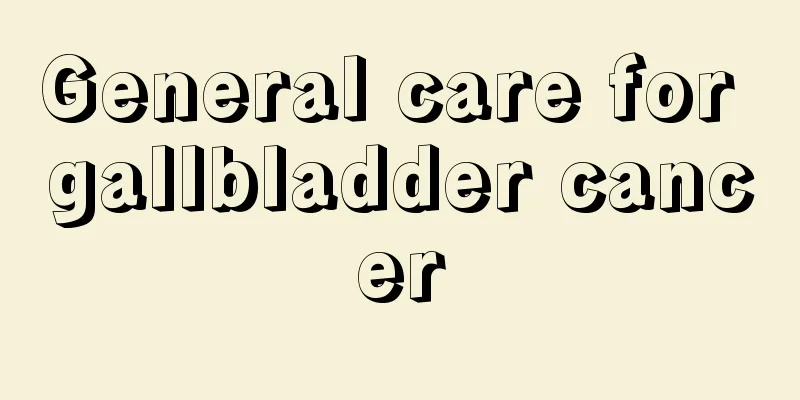What are the symptoms and treatments of myocardial infarction?

|
There are many sudden illnesses in daily life that can have a great impact on the human body. The symptoms and treatment methods of many diseases require reasonable judgment. Patients with myocardial infarction may experience difficulty breathing, heart pain, and cardiac arrest after the onset of the disease, so first aid measures must be taken. Through emergency means, the normal function of the heartbeat must be maintained, and the patient must take medication in time. After the condition stabilizes, bed rest should be maintained for 1 to 3 days, with continuous oxygen inhalation and observation of the heart rate. In terms of diet, small meals should be eaten frequently. Light food is conducive to the unblocking of heart and blood vessels, maintaining smooth bowel movements, and preventing intestinal blockage from affecting normal blood circulation and causing myocardial infarction to occur again. Treat aura symptoms promptly and aggressively The onset of prodromal symptoms may be a sign of an impending myocardial infarction. It is advisable to advise patients to be hospitalized and to take timely and active measures to treat myocardial infarction, which can reduce the chance of myocardial infarction in these patients. Treatment of acute myocardial infarction During this period, the treatment principle should be to protect and maintain heart function, save dying myocardium, prevent the expansion of infarction, reduce the scope of myocardial ischemia, and deal with various complications in a timely manner. We strive to ensure that patients not only survive the acute and dangerous stage, but also retain more functional myocardium after recovery and maintain a more effective life. Acute myocardial infarction occurs suddenly and should be detected and treated early, with strengthened pre-hospitalization treatment. The principles of treatment are to save the dying myocardium, reduce the area of infarction, protect heart function, and deal with various complications in a timely manner. 1. Monitoring and general treatment For patients without complications, they should stay in bed for 1 to 3 days during the acute phase; receive oxygen; and undergo continuous ECG monitoring to observe changes in heart rate, heart rhythm, blood pressure, and respiration. For patients with hypotension or shock, capillary wedge pressure and venous pressure should be monitored when necessary. Low salt, low fat, eat small meals frequently, and keep bowel movements regular. After 3 days, patients without complications gradually transitioned to sitting in a chair next to the bed to eat, urinate, and move around indoors. Patients can usually be discharged from the hospital within 2 weeks. For patients with heart failure, severe arrhythmias, hypotension, etc., the bed rest time and discharge time need to be extended as appropriate. 2. Sedation and analgesia Small doses of intravenous morphine are the most effective analgesic; pethidine can also be used. Those who are irritable and nervous can be given diazepam (Valium) orally. 3. Adjust blood volume Establish intravenous access as soon as possible after admission, and slowly replenish fluids in the first 3 days, paying attention to the balance of intake and output. 4. Reperfusion therapy to reduce infarct area Reperfusion therapy is the main treatment measure for acute ST-segment elevation myocardial infarction. Opening the blocked coronary artery and restoring blood flow within 12 hours of onset can reduce the area of myocardial infarction and reduce mortality. The earlier the coronary artery is reopened, the greater the benefit to the patient. "Time is myocardium, time is life." Therefore, a diagnosis must be made as soon as possible for all patients with acute ST-segment elevation myocardial infarction, and a reperfusion therapy strategy must be developed as soon as possible. |
<<: What are the benefits of honey and brown sugar mask?
>>: What methods can be used to treat heel pain?
Recommend
Eye trauma vitreous opacity
Under normal circumstances, the vitreous body of ...
How to wash ginseng cleanly
Since ginseng has many whiskers and grows in the ...
What are the pharmacological effects of Bupleurum?
Bupleurum is a common Chinese medicine. You often...
How to care after treatment of nasopharyngeal tumor
The treatment process of nasopharyngeal tumor is ...
Can laryngeal cancer be contagious to others?
Laryngeal cancer is a very serious malignant tumo...
How to make sweet potato strips with sweet plums
Sweet potato strips with sweet plums are a snack ...
The efficacy and function of mango mask
Mango is a common fruit in our lives. It tastes s...
What causes fibroids?
In today's society, the number of people suff...
Does traction hurt when a fracture is done?
The treatment methods for some fracture sites are...
Can cervical cancer be effectively prevented? What are the causes of cervical cancer?
Although cancer is scary, almost all cancers can ...
What are the symptoms of fistula?
Anorectal fistula is also known as anorectal fist...
What to do if the neck flesh is loose
When people reach a certain age, their skin will ...
Nursing of drainage tube after bladder cancer surgery
My grandfather is 72 years old this year. He is a...
What are the symptoms of lichen dermatitis
Lichen dermatitis is a neurodermatitis, which is ...
Symptoms of intestinal disorder
Intestinal health has always been an issue of con...









